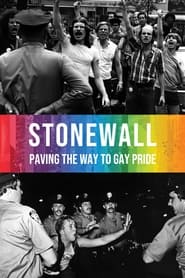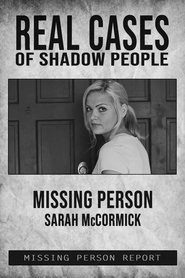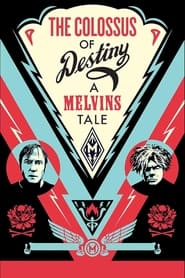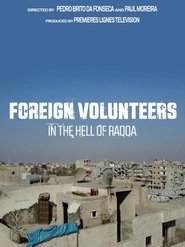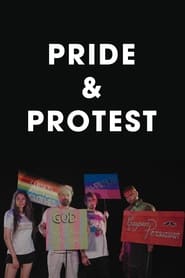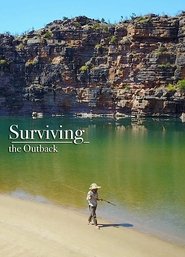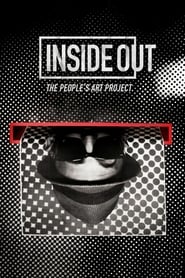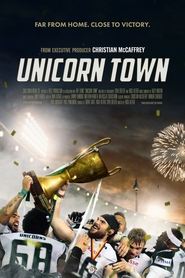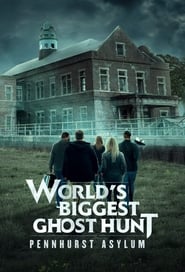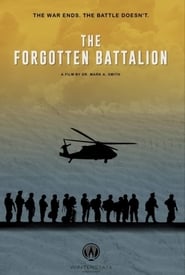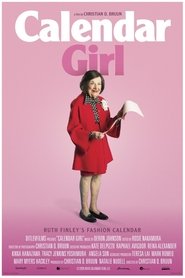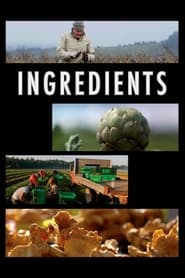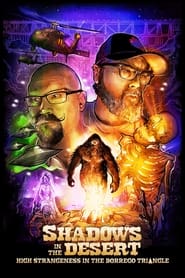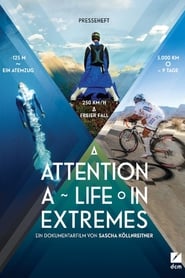Popular Documentary Movies on Free Services - Page 477
-
Stonewall: Paving the Way to Gay Pride
2019
star 7.71969, New York. There is a police raid in yet another gay bar in Greenwich Village. Tired of being persecuted, Stonewall's customers do not give way. This rebellion constitutes a founding moment from which the movement for LGBTQ rights federates and organizes itself politically, which will give birth in 1970, to the first pride march, or Gay Pride. On the occasion of its 50th anniversary , this documentary looks back at its origins by exploring the Stonewall rebellion through intimate accounts of witnesses and activists whose lives were turned upside down by the birth of this movement. -
Real Cases of Shadow People: The Sarah McCormick Story
2019
star 5.1Three students went missing in October 2018. Sarah McCormick, Kyle Miller, Joseph Moore. Authorities have now come forward with the information that video surveillance was found inside of the abandoned Yost home that shows the crews last few moments documenting the Shadow People before their mysterious disappearance. -
The Rolling Mill
2017
The Rolling Mill
2017
What does it mean to be self-determining in America? And what does achieving the American Dream really feel like? Not everyone gets to answer that question for themselves, and some who do may take it for granted. In Cumberland, Maryland, disappearing industry over the last 30 years has left the city economically depressed and half-deserted. The city’s new mayor has taken it upon himself to inspire a revitalization, and his plan starts with buying up homes in The Rolling Mill, a once vibrant neighborhood stricken by the same ills as the city. With every willing seller who leaves The Rolling Mill behind, the mayor’s plan to change Cumberland’s fortunes by building a new chain restaurant progresses. But as the face of the neighborhood they love changes so drastically, a steadfast group of long-time Rolling Mill residents have refused to relent to the city. -
The Colossus of Destiny: A Melvins Tale
2016
star 5.6"How comes no one has ever made a film about The Melvins?" Well, no one has ever tried or thought it even possible.....until now that is. The Colossus Of Destiny - A Melvins Tale is a film about a band who have defied all the rules, for over 32 years and counting, and still managed to succeed and do it their own way. The journey of band members King Buzzo and Dale Crover leads us from the backwards-waters of the Chehalis River in Washington State, down through the Golden Gate of Northern California, and finally settling into the Los Angeles River Basin of Southern California. With the rest of the world thrown in along the way. You will witness first hand the beliefs and attitudes, values and obscenities, slows and fasts, triumphs and toils, loves and hates, wits and giggles of a hugely talented and influential band. And you will also come away with a lesson in how to survive in the wicked world of the music biz without taking yourself too damn seriously. -
The Burnt Half
2023
The Burnt Half
2023
The Burnt Half is a powerful, complex, engaging and gripping, character-led, observational documentary. It’s a film that goes to the heart of a shattered community in the wake of the 2020 bushfires that destroyed two-thirds of this idyllic island, which was the jewel in the crown of South Australia and a global tourism icon. -
Foreign Volunteers: In the Hell of Raqqa
2019
star 8Inspired by the mythology of the International Brigades of the Spanish Civil War, over 300 foreign volunteers chose to give up their comfortable lives and go fight ISIS in Raqqa. We filmed them there, fly-on-the-wall style, fighting, talking, laughing, being attacked by suicide bombs and sniper fire. We were with them until Raqqa was freed. And then we followed them back home – changed forever. Every night, between July and October 2017, young men with no previous military experience pushed through the most dangerous streets of the world. They conquered Raqqa, block after block. They met death and violence. And eventually, along with the Kurdish and Arab forces of the Syrian Democratic Forces, they liberated Raqqa and ended the reign of the most murderous cult of the XXI century. Some of them went back home. We were there when they told their story to their families. This is the untold story of the young Westerners who left everything behind to fight ISIS. -
If Everyone Knew
2022
If Everyone Knew
2022
One in four pregnancies ends in miscarriage, but many women feel ashamed to speak about it. If Everyone Knew documents three women's journeys with baby loss. They tell their personal stories to encourage wider understanding and acceptance. -
Pride & Protest
2020
Pride & Protest
2020
star 2.3In the wake of the Birmingham protests against LGBTQ+ relationship education in primary schools, a team of queer community reporters of colour challenge homophobia and call out racism in LGBTQ+ spaces. -
Surviving the Outback
2019
star 8Michael Atkinson places himself in the historic predicament of two stranded German aviators in 1932 to see if the his skills as a survival instructor, pilot and adventurer will allow him to escape to the nearest civilisation. -
Inside Out: The People’s Art Project
2013
star 5.7A wall can be a barrier. It can be a structure of limitation or a source of repression. For the Inside Out Project, a wall is a canvas, and so are sides of trains, the arches of bridges and the steps leading to Brooklyn brownstones. This fascinating documentary tracks the evolution of the world’s largest participatory art project, the wildly popular Inside Out. From Haiti to Tunisia, South Dakota to the streets of Paris, French artist JR motivates communities to define their most important causes by pasting giant portraits in the street, testing the limits of what they thought possible. The power of paper turns people who feel without voice into unlikely activists by empowering them with their own images. -
Unicorn Town
2022
Unicorn Town
2022
star 8Despite having just 40,000 residents and limited financial resources, the Schwäbisch Hall Unicorns have been able to compete at the highest level of football in all of Europe. But as more money floods into the sport, coaches and fans must face the question: has this team become a relic of the past or can their remarkable culture propel them beyond the constraints of reality? -
World's Biggest Ghost Hunt: Pennhurst Asylum
2019
The longest continuously filmed paranormal investigation in television history, where five paranormal investigators are locked inside the legendary Pennhurst Asylum in Pennsylvania for two weeks to document unexplained recent reports. -
The Forgotten Battalion
2020
star 10War is a killer of some of our best and youngest men and women in America. However, not all of the death happens while deployed or at the hands of enemy troops. Sadly, because of their service's impact, many of our young heroes are dying at their own hands. Forgotten Battalion follows the Second Battalion, Seventh Marine Regiment, one of the toughest and hardest hit during their tour in Afghanistan. In 2008, 1,200 members deployed to cover a territory the size of Oregon, engaging in heavy combat with insurgent elements with no air support and beyond supply lines due to military cutbacks, they routinely ran short on food, water, and ammunition. Upon returning home, they soon discovered the horror of war and the challenges of surviving were not over. Their suicide rate is approximately four times the rate for other young vets and 14 times the average for most Americans. -
Calendar Girl
2020
Calendar Girl
2020
Ruth Finley, a pocket-sized woman of immense determination, has been the queen of the fashion industry since the 1930s. As a young mother, Ruth created the iconic pink Fashion Calendar, a publication that continues to organize and marshal American fashion today. Featuring Bill Cunningham, Carolina Herrera, Nicole Miller, Diane von Furstenberg, and more, this joyous profile is a love letter to fashion and the extraordinary life of one remarkable woman. -
Ozone Hole: How We Saved the Planet
2019
star 8.3Discover the forgotten story of the hole in the ozone layer and how the world came together to fix it. Hear from the scientists and politicians who persuaded Ronald Reagan and Margaret Thatcher to take action and solve the planetary problem. -
Ingredients
2009
Ingredients
2009
star 5.9At the focal point of this movement, and of this film, are the farmers and chefs who are creating a truly sustainable food system. Their collaborative work has resulted in great tasting food and an explosion of consumer awareness about the benefits of eating local. Attention being paid to the local food movement comes at a time when the failings of our current industrialized food system are becoming all too clear. For the first time in history, our children's generation is expected to have a shorter lifespan than our own. The quality, taste and nutritional value of the food we eat has dropped sharply over the last fifty years. Shipped from ever-greater distances, we have literally lost sight of where our food comes from and in the process, we've lost a vital connection to our local community and to our health. -
Shadows in the Desert: High Strangeness in the Borrego Triangle
2024
Derek Hayes and David Flora explore unique areas and stories of weird phenomena of the "Borrego Triangle," an area full of anomalous phenomena including cryptids, ghosts, disappearances, and UFOs. -
The Real Founder
2016
The Real Founder
2016
There is no question that the McDonald's fast-food restaurant chain is the largest in the world, and Richard "Dick" McDonald, along with his brother Maurice, started it all. Enjoy a rare interview with Dick as well as a treasure trove of information, photos, and footage depicting the development of the McDonald's chain and the fast food industry that still dominates our eating habits today. -
Crownsville Hospital: From Lunacy to Legacy
2018
star 7.8Crownsville Hospital: From Lunacy to Legacy is a feature-length documentary film highlighting the history of the Crownsville State Mental Hospital in Crownsville, MD.
 Netflix
Netflix
 Amazon Prime Video
Amazon Prime Video
 Apple iTunes
Apple iTunes
 Apple TV Plus
Apple TV Plus
 Disney Plus
Disney Plus
 Google Play Movies
Google Play Movies
 Paramount Plus
Paramount Plus
 Hulu
Hulu
 HBO Max
HBO Max
 YouTube
YouTube
 fuboTV
fuboTV
 Peacock
Peacock
 Peacock Premium
Peacock Premium
 Amazon Video
Amazon Video
 The Roku Channel
The Roku Channel
 AMC+
AMC+
 Kocowa
Kocowa
 Hoopla
Hoopla
 The CW
The CW
 Vudu
Vudu
 Starz
Starz
 Showtime
Showtime
 PBS
PBS
 Pantaflix
Pantaflix
 FXNow
FXNow
 Tubi TV
Tubi TV
 Kanopy
Kanopy
 Comedy Central
Comedy Central
 Crunchyroll
Crunchyroll
 Microsoft Store
Microsoft Store
 Redbox
Redbox
 Sun Nxt
Sun Nxt
 ABC
ABC
 DIRECTV
DIRECTV
 Crackle
Crackle
 Fandor
Fandor
 Plex
Plex
